Teaching American Literature: My Units & Favorite Lessons
Teaching american literature.

But I know how it feels to be completely overwhelmed with the thought of American literature because there are so many texts, themes, options, and approaches. I also know how helpful it is to merely glance at another teacher’s ideas and plans, so I decided to spread the American Lit love by offering you a glimpse into how I teach my class. At my school, this course is offered at the 11th grade level, and it is the standard English class for students who are not taking AP.
This blog post is not a comprehensive curriculum map, but rather, an outline with a few of my favorite activities for each unit and some thoughts on what I plan on changing this year. I do plan on writing blog posts for each unit that I mention below, so you can look forward to those for even more information. Also, this is just a look at Semester I, so stay tuned for another post of Semester II.
Happy planning!

UNIT 1: American Perspectives & the American dream
This is a mini-unit that serves as the foundation for my year-long American literature course. In the past, we’ve specifically focused on the American dream, but this year we are taking an approach to incorporate more unique voices from diverse writers. Inevitably, we will discuss the American dream from the perspective of different individuals, but we aren’t locking ourselves into the “dream.” This mini-unit is a way to expose students to key ideas, questions, and themes that we will encounter throughout the year. Additionally, this unit allows us to preview essential skills and obtain some writing samples that will help inform our instruction.
That being said, my two favorite activities do involve the American dream, but both of these are great ways to introduce different perspectives and voices.The first activity is actually a genius (not my own idea) simulation that introduces students to the concepts of privilege and social mobility, and thus, the American dream. You can read more about it here , but essentially, you put a trash can at the front of the room and instruct students to create a paper ball. Students must stay in their seats, and they get only one chance to make the basket. Students in the back quickly get frustrated and voice their complaints, while the few privileged students in the front often make the shot.
When I do this activity, I hype it up and don’t provide any context, because I want my students to discover the purpose of this simulation on their own. After everyone has a shot and I reward the winners with candy, I ask the students: “Why do you think we just did this activity?” and we discuss the symbolism of the trash can as the American dream. This simulation really opens up students’ eyes to the reality of the American dream. Many of the students in the back of the room don’t even have a clear view of the trash can (the dream), because there are so many people (obstacles, inequalities, etc.) in their way. After we discuss the game as a class, I facilitate reflective writing. I ask students to consider how this game influenced their thinking and what they would like to learn more about as we progress through the unit.
My other favorite activity involves analyzing political cartoons that comment on the American dream. I have this as a freebie in my TPT store! I actually do this lesson in the learning stations format, so each cartoon is a different station. A quick Google search will gives you lots of options for cartoons.
Like I said, I am tweaking this unit a bit this year, so stay tuned to my Instagram and this blog because I hope to share the new things I do.
UNIT 2: Hysteria and “The Crucible”
Our first full-length unit is anchored in a study of hysteria through Arthur Miller’s tragedy, “The Crucible.” We analyze the play as an allegory for McCarythism/the Red Scare and focus on Miller’s purpose in writing.

My other favorite lesson that I do for pre-reading is actually a different simulation called the Dot Activity. Once again, I did not create this, but it’s seriously the BEST way to show students how hysteria unfolds and how individuals were targeted during the Salem Witch Trials and the Red Scare. You can read more about the Dot Activity here, but here’s a breakdown: You give students index cards; most are blank, but a few have red dots, and the goal of the game is for students to form groups that are dot-free. You let the students run wild for 5-10 minutes and watch the madness as students quickly begin accusing others. At the end of the time period, the group with the largest number of non-dots wins. If a dot has infiltrated a group, that group is disqualified. Students will get SO into this game, so beware. Last year, my students got so loud that a neighboring teacher let me know we could be heard beyond the four walls of my room. Whoops!
I have a few changes in the works for this unit, because I am cutting down the time I spend on it in order to make room for some more writing in other units. To accomplish this, I am going to teach “The Crucible” as a literary analysis/film analysis hybrid unit. We will likely watch all of Act 3 and parts of Act 4, pulling in excerpts to supplement the film. I’m a firm believer in the power of film analysis as a tool to scaffold literary analysis. I actually wrote a bit about how I facilitate film analysis in this post about students who struggle with reading.
UNIT 3: Revolutionary Rhetoric
To study persuasion and argumentation, we analyze the texts and speeches of the American Revolution, as well as more modern texts. Then, students select relevant topics for 1:1 Lincoln-Douglas debates. This year, I am going to incorporate more student choice by providing other options beyond the traditional debate. I’m thinking some kind of multimedia project where students create a website, podcast, PSA, letter to a legislator, etc. Formal debates will still be an option, but I don’t want to force students to debate when they can demonstrate their mastery of the standards in their own unique way that suits their individual learning styles.
My favorite part of this unit is actually my favorite lesson OF ALL TIME: Speed Debating! I am not exaggerating when I say this! This is a lesson that gets every single student engaged, which is a rare feat when you teach high school English. It is so student-directed and engaging that you can just float around the room and “watch the magic happen,” as I like to say. 🙂 During this activity, students participate in mini impromptu debates over various topics, some silly and some serious…but all guaranteed to spark some friendly controversy! Students are challenged to use as many rhetorical appeals and devices as possible, and they track their opponents’ use of these strategies as well. If you want more information on speed debating, check out my blog post here.
Another fun lesson is my Rhetorical Devices Question Trail , an engaging, kinesthetic activity that gets students moving around the room to identify examples of rhetorical devices in songs. A question trail is an activity comprised of different multiple choice “stations” or “spots.” These questions are posted throughout the classroom. At each station, students answer a multiple choice question. Each answer (a, b, c, or d) will send the students to a different station. If students answer each question correctly, they will travel to each station and complete a full circuit. If students answer a question incorrectly, they will eventually find themselves at a station they’ve already completed, which tells them that they need to backtrack. This gives you clear, immediate feedback. You will quickly see who is getting it (“on the trail”) vs. who is not (“off the trail”).
UNIT 4: The Pursuit of Happiness & Transcendentalism
In this unit, we study the traditional Transcendental texts of Emerson and Thoreau before reading Jon Krakauer’s Into the Wild . I hook students with another fun “How Transcendental Are You?” Quiz and use learning stations to preview key tenets of Transcendentalism. I also like to show the movie trailer for Into the Wild and ask students to make predictions about the text. I’ve found that Into the Wild is a gem of book that engages some of my most reluctant male readers, especially the outdoorsy types! If you teach Transcendentalism, it’s worth checking out, even if you only use excerpts from the text. You can check out all of my Transcendentalism products here and my Into the Wild resources here.

That wraps up my first semester of teaching American literature. Because this blog post is already long, I will continue with Semester II in a second post. If you’re already planning and want to get a sneak peek at at the rest of my year, here’s a Semester II outline with links to some of my resources:
UNIT 5: Romanticism
UNIT 6: Synthesis Writing
UNIT 7: Harlem Renaissance
UNIT 8: The Great Gatsby
Share this:
- Click to share on Twitter (Opens in new window)
- Click to share on Facebook (Opens in new window)
You may also enjoy:
How to use the “what do you …, 10 activities for any dystopian novel, back to school activities for middle & …, 10 activities for teaching the hunger games, 20 comments.
This is awesome! Thank you!
How many weeks would you say you spend on each of these units during first semester?
Hi Abby, I love following you and your work. I will be teaching a course this fall which is the only course we really teach American Lit at the school, but we call it Lang and Lit. We get 1 semester with our 10th graders to cram as much as we can in, then the second semester they move to our Composition class which basically prepares them to write a research paper. Our school’s student project, which is also a graduation requirement, is that they write a research paper during their 11th-grade year on their own using what they learned in the class. They pick a topic complete the paper and give a speech. I have taught this class a couple of times and neither time have I been completely happy about it. Just wondering if you had only a semester to teach what would you do from all of your American Lit curricula. I haven’t really done Gatsby before because the AP teacher likes to do it with her AP students. Just looking for some input from others on their ideas. I loved teaching the Crucible and the Puritan work, a Raisin in the Sun and some of the Civil Rights, I have loved teaching of Mice and Men and To Kill a Mockingbird, but then I feel bad I never get to the poetry and they often miss all of the great American Poets. Any ideas or input would be so appreciated!
I love the idea of the dot game! I’m starting the year with Crucible, so I’ll definitely have to give that a shot.
What is your pacing for the units? About how long do you spend on each one?
These ideas sound awesome.
Thank you so much for sharing this! I’m teaching American Literature for the first time this year, and I’m so excited with your ideas!
You are welcome! Good luck teaching it 🙂
This is SO helpful for me, as I’m about to teach American Lit for the first time. How long do you spend on each unit? Also, how can I see what you do for the last four units?
Pacing varies each year, but usually 3-4 weeks for the American Dream, 5-6 weeks for The Crucible, 4-5 weeks for Revolutionary Rhetoric, and another 4-5 weeks for Transcendentalism/Into the Wild. I hope this helps! All of my American Lit curriculum is available here: https://www.teacherspayteachers.com/Product/American-Literature-Growing-Bundle-Stations-Activities-Escape-Rooms-MORE-5219425 .
Unfortunately, I haven’t finished the second blog post but I will work on it. 🙂
Thanks for this! I am teaching American Lit for the second time this year and I know I have a LOT to revamp to make it better. I just put together that I bought your Harlem Renaissance bundle last year and really enjoyed using it. Thank you for sharing what you do!
You are so welcome! I am glad to hear that it has helped. 🙂
Hi! Are the political cartoons no longer a freebie? Thanks!!
This is great! I am starting over at a new school this year – teaching 10th and 11th grade. Thank you for sharing. I’m wondering if you have resources for 10th grade as well? Also, what is the pacing for this 11th grade American Literature course?
I don’t have materials specifically designed for 10th grade, but I do have a variety of resources that work with any text. 🙂
Where is your curriculum for a Semester 2 American Lit?
I am still working on that blog post – LOL! I bit off more than I could chew with this. Until it’s ready, you can check out all of my American Lit resources here: https://www.teacherspayteachers.com/Product/American-Literature-Growing-Bundle-Stations-Activities-Escape-Rooms-MORE-5219425 .
When I found this, I was so relieved. I am going on my 4th year of teaching, but I’m starting at a new school in August and teaching 10th and 11th grade for the first time (I’ve only ever taught 9th). For some reason, I was somewhat intimidated with 11th grade American Lit, but reading this post made me feel excited about the content and I feel inspired to use some of your fun lesson ideas. Thanks so much!!!
Yay! This makes me so happy. I hope everything is going well for you. 🙂
Really curious about your pacing. Sad to see you have not responded to anyone else so I am guessing I will not find out about it! HA. Fingers crossed
Hi there! It’s really difficult to keep up with comments on WordPress because 95% of the comments I receive are spam. They push down all of the regular comments, so I don’t always see them…sorry! Pacing varies each year, but usually 3-4 weeks for the American Dream, 5-6 weeks for The Crucible, 4-5 weeks for Revolutionary Rhetoric, and another 4-5 weeks for Transcendentalism/Into the Wild. I hope this helps! All of my American Lit curriculum is available here: https://www.teacherspayteachers.com/Product/American-Literature-Growing-Bundle-Stations-Activities-Escape-Rooms-MORE-5219425 .
Leave a Reply Cancel reply
Your email address will not be published. Required fields are marked *
Notify me of follow-up comments by email.
Notify me of new posts by email.
Check out my most popular posts!
August 5, 2018: why i don’t review the syllabus on the first day …, december 16, 2018: 10 ideas for planning engaging novel units, december 11, 2017: comfort in the classroom with flexible seating, july 21, 2018: teaching american literature: my units & favorite lessons.
Tips and ideas for teaching high school ELA
7 Units for a Complete American Literature Curriculum
New to American lit and looking for an American Literature Curriculum Map? I’m here to help 🙂
In my decade-plus of teaching, I’ve taught everything from 4th to 12th grade. Hands down, my favorite grade to teach is 11th. They’re old enough to realize they should start taking school seriously, but senioritis hasn’t kicked in yet.
English III is my teaching sweet spot. In North Carolina (where most of my experience has been) that means American Literature.
This is perfectly fine because that’s one of my favorites to read – especially the darker authors like Poe and Hawthorne. (I have a little bit of a dark side, but you never guess looking at pale, green-eyed, blonde-haired 5’3 me).
Being the only person who taught a specific group of students (in this case, the only resource English teacher within the special education department) had its benefits. For example, I was kind of part of the English department but not really, meaning I didn’t necessarily have to adhere to the scope and sequence/pacing guides and things like that that the regular ed teachers had to. As a result, I was able to structure my class how I best saw fit. I’ve since moved states and, after several years of district-mandated scope and sequences, I have autonomy again!
Over the last year or so, I’ve started making the transition from chronological units to thematic units. The structure detailed below follows a more chronological approach, but it could easily be adapted to a more thematic approach – especially if you are required to teach chronologically.
Unit 1 - Native American Origins
I always started off with the first unit in the textbooks, which in the school usually consisted of Native American origin/creation stories as well as early journals. I’d usually break this up into two units – one for the creation stories and one for the nonfiction journal pieces.
This is typically the shortest – maybe a week (based on 85ish minutes 5 times a week).
We’d start with “The Earth on Turtle’s Back” by the Onondaga tribe and then move into “When Grizzlies Walked Upright” by the Modoc tribe.
After reading, students compared and contrasted the two stories. One year, I had them make a foldable featuring the title, an illustration, summary, and … comprehension questions? Theme? I don’t quite recall (and of course, that’s one thing I have thrown away 🤦🏻♀️) but you get the idea.
Both stories serve as great mentor texts for students to use when writing their own origin stories.
I’ve recently started trying to incorporate more contemporary Native American/Indigenous People’s texts into my curriculum. Most recently, my students a video interviewing three Native Americans about their experiences and passions. The video can be found on TeachFlix. I also am making a more conscious effort to expand my Native American texts beyond just the origin myths.
Possible EQ: What is America’s story, and who gets to tell it? (This is what I’ve used).
Unit 2 - A New Nation
I always found it helpful to provide students with some background information on the time period. Visual notes are a great way to engage students in the otherwise drudgery of notetaking. This is usually done at the beginning of each unit.
A continuation of the textbook Unit 1, my Unit 2 consisted of writings from Columbus, John Smith, and William Bradford – not exactly the most enticing interesting things in the world.
Reasons to start with these texts:
- Chronologically, it made the most sense to lay the foundation for everything else we’re reading
- Nonfiction isn’t really my thing. I never have to read another nonfiction article again I would be perfectly happy (If I wanted to teach nonfiction I’d have taught history).
I found that going ahead and getting that out of the way tended to work better for me. I was able to kind of frame it as a “Hang with me and I promise I’ll get to some more interesting stuff later on” unit.
I’d usually end this unit with some information on the Puritans, some Ann Bradstreet poetry. And of course – Jonathan Edwards’ Sinners in the Hands of an Angry God . Read as completely deadpan as possible to get the full effect.
Unit 3 - Foundational US Documents
Keeping in chronological order – the next up is “foundational” US Documents. The textbook only included the Declaration, but you can expand it to be whatever seminal documents you choose. The Constitution. The Emancipation Proclamation. The Gettysburg Address. Frederick Douglass “What to the Slave is the Fourth of July?” Martin Luther King’s “I Have a Dream” speech.
Here is a great place to build in some mini-lessons on rhetorical devices – especially if you’re covering Douglass or King. Check out this post on 4 Ways to Analyze Rhetorical Devices in MLK’s “I Have a Dream” . Have students track the use of rhetorical devices through charts, rhetorical pyramids, and/or a rhetorical precis.
Check out these Lesson Plans on the United States Constitution from History.com. Practice close reading of the Constitution with this lesson from Linda R. Monk: “Words We Live By: Your Annotated Guide to the Constitution.”
Possible EQ: To what extent is rebellion required for progress? (This is what I’m planning on using. Shoutout to Amanda at Brave New Teaching for this one.)
Unit 4 - American Gothicism
Unit four was where I typically started to stray from the chronological layout of the textbook. The classes I taught were on a 4 x 4 block schedule meaning that I had for classes in the fall and then another four in the spring. Each class was 90 minutes long.
I often referred to this as my Gothicism unit, and it was my favorite unit to teach. I love Poe, Hawthorne, Irving – all those guys. I’d typically start with Poe since he would be one of our main focuses. Before that, though, I’d do a brief introduction on Gothic literature and how it was a response to the Romanticism of the time.
Most of my students had already read “The Tell-Tale Heart” and “Cask of Amontillado”, so I ventured into some lesser-known works. My go-to was “The Black Cat ”. I’m also a fan of “The Fall of the House of Usher” ; although it’s a bit longer and the vocabulary and syntax are more complicated, it’s an excellent example of Gothic writing.
Other favorites of mine included Hawthorne’s “The Minister’s Black Veil” and “Young Goodman Brown” – great for discussing allegory.
Unit 5 - The Novel
The last couple of years when I was teaching strictly special ed students I stuck with Of Mice and Men because it was short and accessible and students could relate to it. We had great conversations about the treatment of Curley’s wife, George’s justification for shooting Lenny, and so forth.
In previous classes, I have taught The Great Gatsby , which is absolutely one of my favorites and includes one of my favorite endings in all of English literature: “So we beat on, boats against the current, borne back ceaselessly into the past”. However, since moving to FL, Gatsby has been changed to a 10th-grade novel, meaning I’ve not had the chance to teach it. I always started with introductory material on Fitzgerald and the 1920s.
Another one of my favorite American literature pieces is Their Eyes Were Watching God. I may be a bit biased as I live in Florida and part of it does take place in the town that my parents live in; plus I currently live (and teach) about 15 minutes from where Hurston’s buried.
I’ve also done Purple Hibiscus with my Honors juniors and hope to do it again eventually.
EQs depend on the novel.
Gatsby: Is the American Dream more likely to inspire or destroy?
Eyes & Purple Hibiscus : Why do relationships matter?
(Both of these are also Brave New Teaching/Amanda EQs).
Unit 6 - The Crucible
Another favorite is The Crucible . I finally got to teach it again after several years and the students had some strong opinions – especially about the whole John and Abigail affair.
Start with background material on Miller, the Salem Witch Trials, and McCarthyism to front-load the necessary information. My focus tends to be on the rhetorical devices used in the play, but you can also focus on character development.
I’ve done this as one of my last units and as part of a kind of modernism time. This text can also be taught earlier on in the year when you cover Puritan literature.
One of my favorite memories was when my cooperating teacher left mid-semester and I was left to teach the class. I had several boys literally fighting over who was going to get to read Reverend Hale. The Crucible will always hold a special place in my heart for that reason alone.
Possible EQ: How is language used to establish and maintain power? (This was the one I used).
Unit 7 - 20th Century
My last unit was always my contemporary short stories – so authors such as Hemingway and Twain. Novels such as Gatsby could also be put into this category if you’re going more chronologically, as could The Crucible . My go-to Hemingway story was “Hills Like White Elephants” – great for inference practice. A Rose for Emily also works well here.
I also tended to pepper in a mini poetry unit focusing largely on American poets such as Langston Hughes and comparing and contrasting some of his poems to other poems and songs that had the same theme. Check out 18 Poetry Pairings for Secondary Students for poetry pairing ideas.
The last few weeks were always tied up with test prep then came the NCFE, which was North Carolina’s 11th-grade state standardized test. Then, it was time to start the whole thing over two days later (if I taught 11th grade both semesters).
So there you have it. My go-to units for my American literature curriculum. I’m currently in the process of revamping it. You can read more about my thought process and general curriculum overhaul ideas in 5 Ways to Revamp Your Curriculum Design. You can also head over to IG to see the process.
What about you? What are your favorite American lit units? Hit “Leave a Comment” and let me know.
Want an editable version of this outline – along with links and teaching ideas? Then snag your free American Literature Curriculum Map!
American Literature Curriculum Map
Yes! Send it my way!
You can unsubscribe anytime. For more details, review our Privacy Policy.
You have successfully joined our subscriber list. Your FREE American Literature Curriculum Map is on its way to your inbox!
One Response
I love your curriculum plan for 11th American Lit!

Leave a Reply Cancel reply
Your email address will not be published. Required fields are marked *
Copyright l Windows into Literature l All Rights Reserved
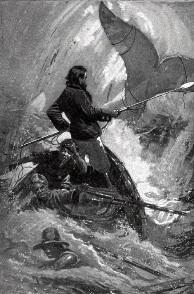
Study Guides
A collection of study guides designed to help teachers and students understand and ENJOY classic literature! We have heard from teachers requesting ideas on HOW to teach the literature we offer at our website. This page contains a collection of study guides for great works of American Literature and genres assigned to students in high school and middle school.
Guides by Title , Guides by Genre , Useful Links , and Notes/Teacher Comments
Guides by Title
Each guide includes a link to the work, plot summary, character analysis, genres & themes, historical context, quotes, discussion questions, useful links, and notes/teacher comments.

A Dark Brown Dog
A Horseman in the Sky
An Occurrence at Owl Creek Bridge
Moby-Dick; or, The Whale
Song of Myself
The Call of the Wild
The Gift of the Magi
The Lady, or the Tiger?
The Little Match Girl
The Minister's Black Veil

The Monkey's Paw
The Necklace
The Pit and the Pendulum
The Scarlet Letter
The Story of An Hour
More titles coming soon!

Guides by Genre
Dark Romanticism

Dystopian Stories
Favorite Fairy Tales
Feminist Literature
Gothic Literature
Mystery Stories
Romanticism
Russian Writers
Science Fiction
Transcendentalism
The Unreliable Narrator
Useful Links
American Literature Lesson Plans: 19th Century Authors
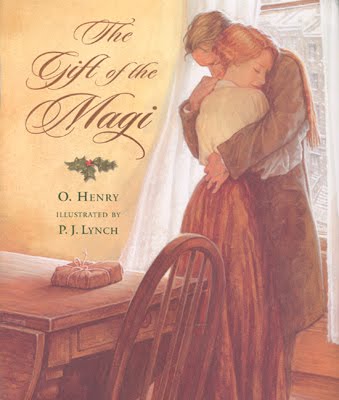
How to Teach Writing About Independent Reading
Persuasive Writing Workshop
Storyboard That Teacher Guides
Complete List of Major and Minor Characters in the Bible
Why Would a Teacher Use SparkNotes?
Recommended Short Stories for High School
Recommended Short Stories for Middle School
20 Great American Short Stories
25 Great American Novels
Biographies of American Authors
American History in Literature
All About the Short Story

Notes/Teacher Comments
Visit our Teacher Resources , supporting literacy instruction across all grade levels


7sistershomeschool.com
Homeschool Help and Curriculum
High School American Literature Activities
- Facebook 206
- Pinterest 1386
Reading books by great American authors with a group is even better than reading them alone! Homeschool co-ops, book clubs, day schools and the like provide wonderful chances to engage in group activities based on the books in the American Literature curriculum. Additionally, crafting interesting writing assignments from the books you’ve read enrich the learning.
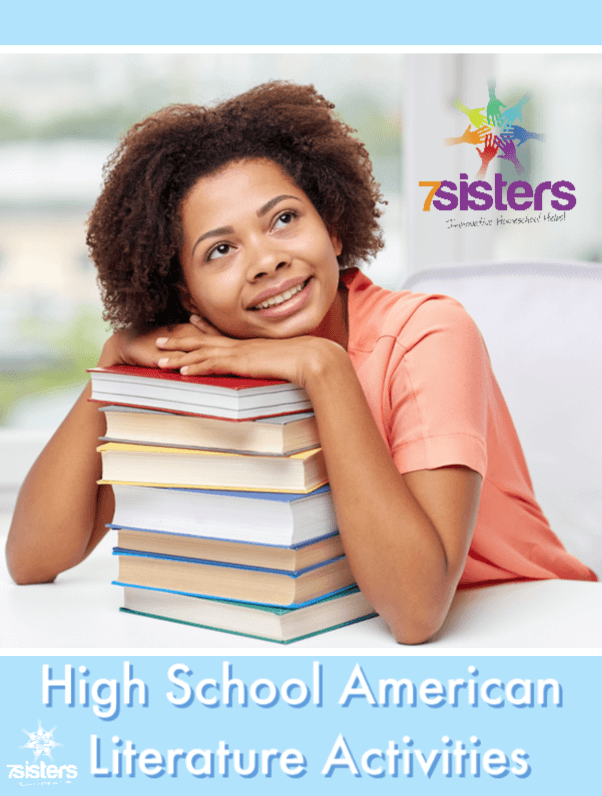
Here are some writing assignments and group activities I’ve enjoyed with the high school American Literature students I’ve worked over the years:
From Ray Bradbury’s Fahrenheit 451 :
If you had to preserve only one book (other than the Bible), what book would you choose, and why? Great for discussion or as a writing prompt!

From New Journalism, like Tom Wolfe’s The Right Stuff :
Report on an event in your local area (or even something silly that happened in your own home), but write about in the style of New Journalism. Tell the facts accurately, but tell it with a particular voice, use colorful and descriptive prose, and let your personality show.
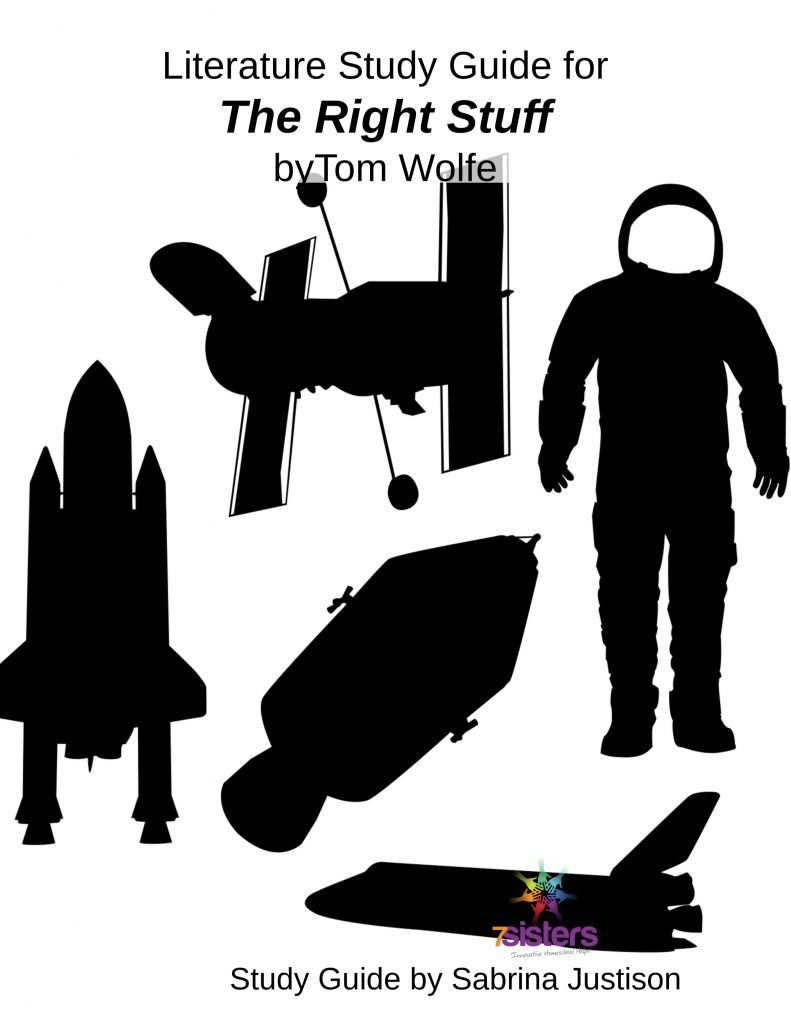
From Isaac Asimov’s I Robot :
People feared the power that advancing technology would have on the world. Take a look at the power of the smartphone, the internet, the constant connection that is virtual but feels real. How well did Asimov predict the world to come?
From A Raisin in the Sun :
Watch a performance on DVD or YouTube. Discuss the elements that were more or less powerful on the screen than on the printed page. Or hold a readers theater event and read the play aloud together. (For more on readers theater, check out my post with tips for making it a smash!)
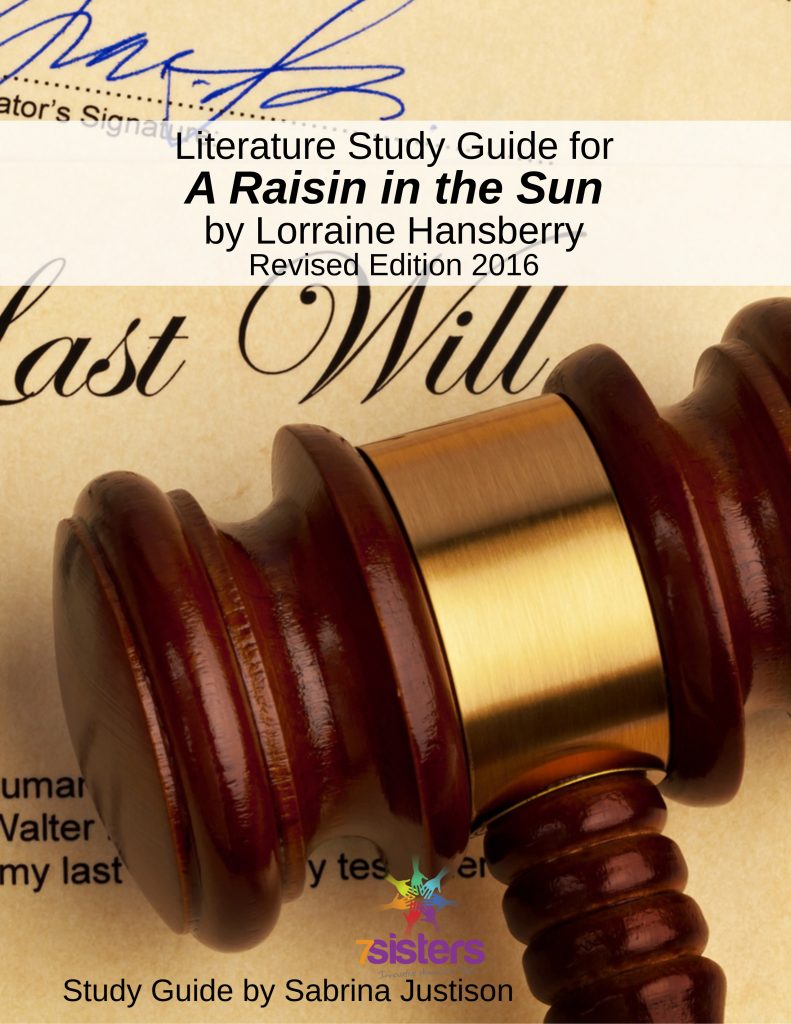
From American Poetry: Reading and Writing :
This was easy. It’s all in the 5-week workbook. American poems from different ethnic groups, historic poems, narrative poems, fun poems. The read a selection of poems. Then in a light-hearted manner, they create their own poem in each style. (Besides being fun, it helps our homeschool high schoolers to meet part of their writing requirements for the year!)
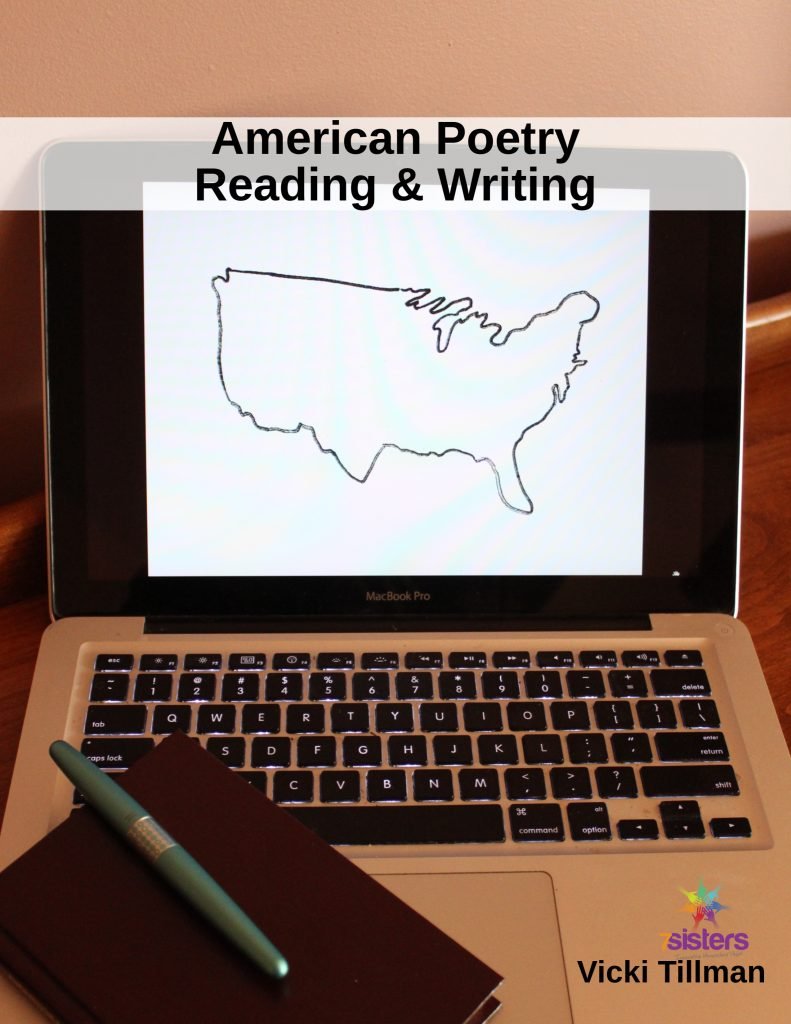
From Henry David Thoreau’s Walden :
If you were going to try an “experiment” like Thoreau’s self-sufficient life at Walden Pond, where would you go? What would you need to prepare first? What would your goal be?
From Little Women
If your homeschool high schooler is working individually, he could read the play. If your father was away at war, how would your family adapt. Do you know any military families? Is your family a military family? How is life different when a parent is deployed?
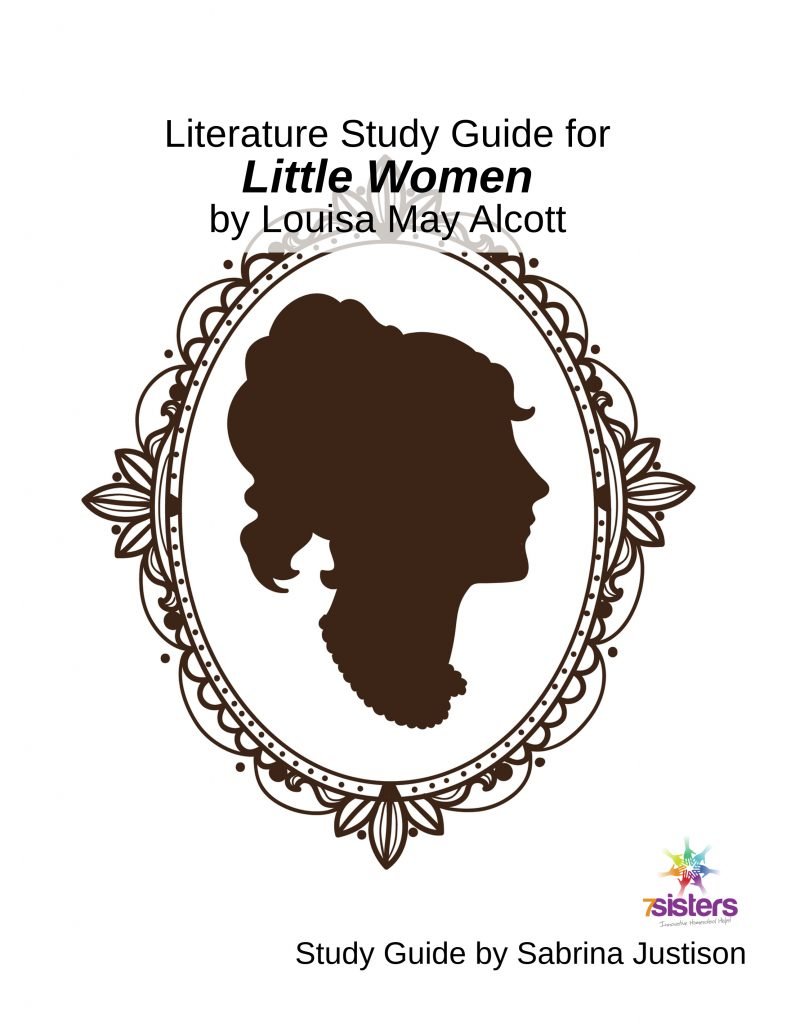
Take some time with the co-op class and produce a play, or readers theater version of a play. (Listen to this episode of Homeschool Highschool Podcast for delightful ways to do readers theater .) Download 7Sisters brief adaptation of Little Women for a delightful drama experience.
From books with ethical dilemmas: Huckleberry Finn and To Kill a Mockingbird :
Explore ethical dilemmas that are created by divisions in society based on race, class or other circumstances. Huckleberry Finn may be one of Mark Twain’s most delightful stories, but it is also full of times where the characters get into ethical *fixes*. There are also many themes within the book that nudge readers to think about class and racial prejudices.

Click here for an excerpt from The Adventures of Huckleberry Finn Study Guide .
Even more ethical dilemmas based on divisions of race, class or other circumstances are found in Harper Lee’s classic: To Kill a Mockingbird . This is a don’t-miss-it read for homeschool high schoolers. Have your teens compare the race and class distinctions in both books.

From books with a strong plot line like The Scarlet Letter :
Practice inferential reading skills. Stop 1/3 of the way into the story and predict the various ways the plot might logically develop from there. What will happen next?

Click here to read about some further high school American Literature activities.
Are you looking for a full year of American Literature with study guides? Check out our American Literature bundle:
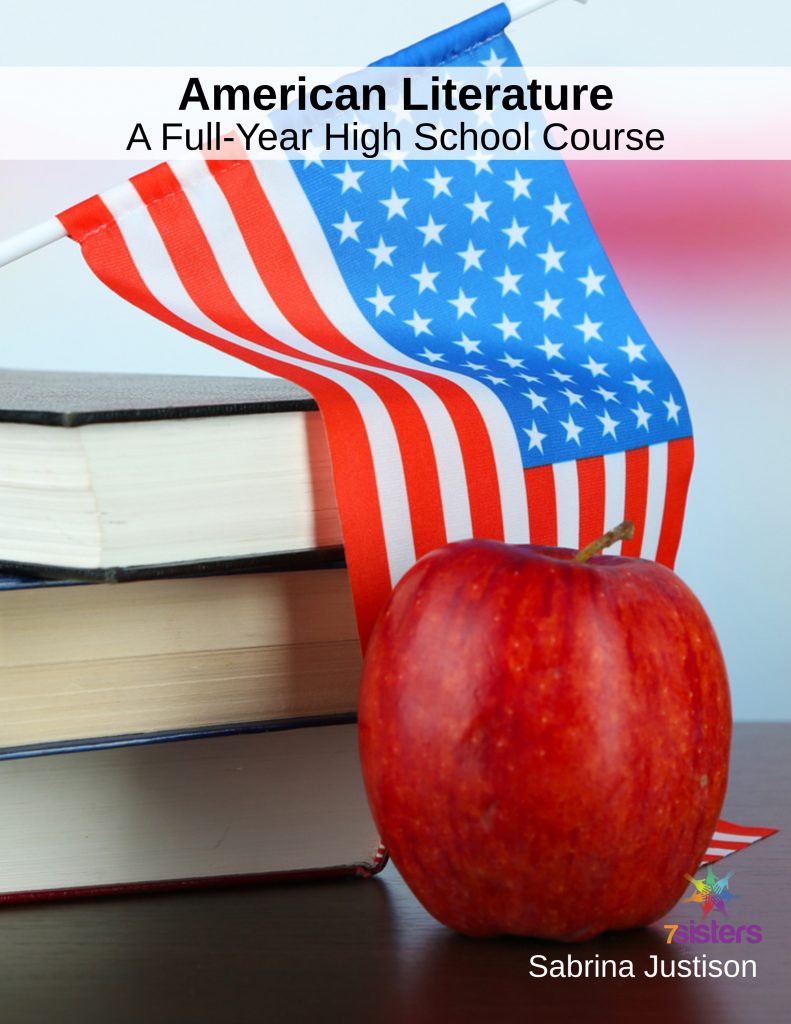
Are you looking to tie your American Literature in with American History? Click Her e for a list of our favorite books.
How about watching some great movies that portray moments in U. S. History? Click here for a list of some of our favorites. (Note: Not all of these movies pertain to American History, but they should get you started on a list of your own.) Check out our Cinema Studies for Literature Learning – many of the titles dovetail nicely into a study of American History.
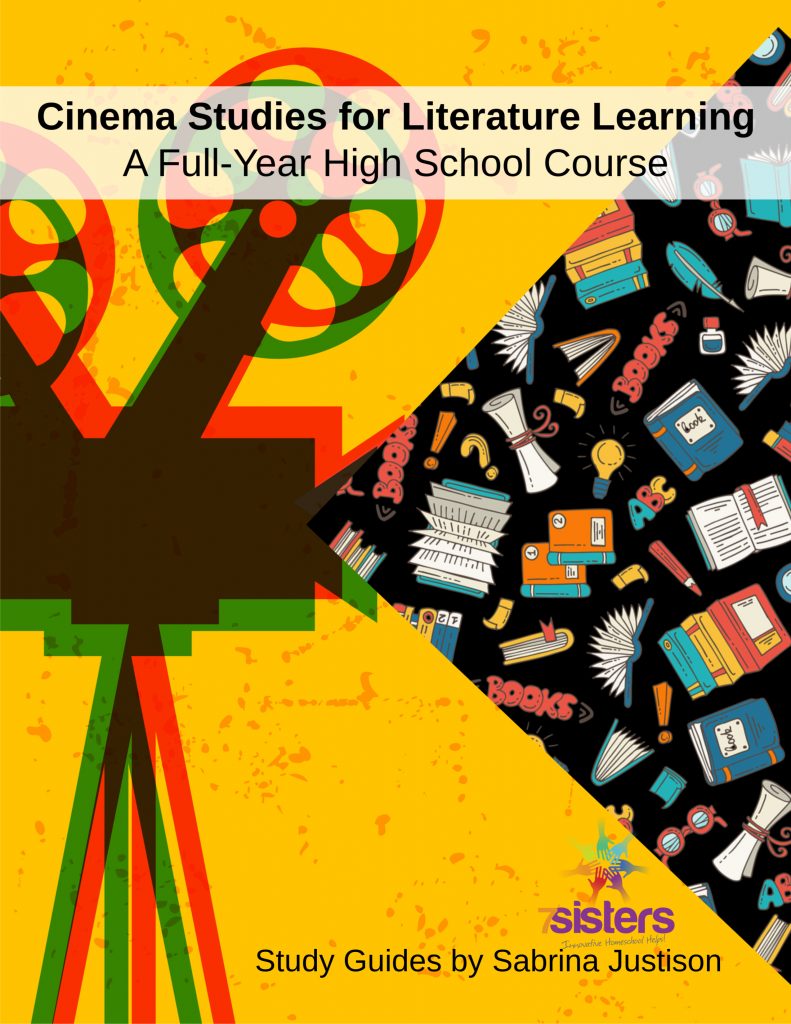
Do you have ideas to share for enriching your homeschool’s study of American Literature?

Sabrina Justison
Leave a reply cancel reply.
Your email address will not be published. Required fields are marked *
Save my name, email, and website in this browser for the next time I comment.
Want To Keep In Touch?
No SPAM...promise!
Your Information will never be shared with any third party

IMAGES
VIDEO
COMMENTS
UNIT 1: American Perspectives & the American dream. This is a mini-unit that serves as the foundation for my year-long American literature course. In the past, we've specifically focused on the American dream, but this year we are taking an approach to incorporate more unique voices from diverse writers. Inevitably, we will discuss the ...
This course studies the national literature of the United States since the early 19th century. It considers a range of texts - including, novels, essays, and poetry - and their efforts to define the notion of American identity. Readings usually include works by such authors as Nathaniel Hawthorne, Henry David Thoreau, Frederick Douglass, Emily Dickinson, and Toni Morrison.
You will sign up for your tasks early in the term, a different one for each essay. At the writing workshop before each due date, you will work with the other writers in your editorial group to refine your work. Your essays should explain the historical, biographical, or literary context for reading the text and should show how knowing this ...
Figurative language is non-literal language, existing commonly in both prose and poetry. Figures of speech (metaphors and similes, symbols and personification) enrich literature by creating images in the reader's mind. Literary devices such as foreshadowing and irony also enrich the literary contents of a work.
Unit 1 - Native American Origins. I always started off with the first unit in the textbooks, which in the school usually consisted of Native American origin/creation stories as well as early journals. I'd usually break this up into two units - one for the creation stories and one for the nonfiction journal pieces.
Answers. American Literature 1 month ago. For this assignment, imagine you are Cleofilas writing a journal entry the events described in the story. Try to get into the mind of Cleofilas. Be imaginative and creative. Pretend you are Cleofilas and have successfully left your marriage with Felice's help. You will not be retelling the plot of the ...
Assignments. This section contains writing assignments that students completed in class, as well as three essay assignments. Students were also required to present their work for each essay in class. Unless otherwise noted, all examples are courtesy of anonymous MIT students, and are used with permission. The essays published here are unedited ...
The assignments in this course are openly licensed, and are available as-is, or can be modified to suit your students' needs. If you import this course into your learning management system (Blackboard, Canvas, etc.), the assignments will automatically be loaded into the assignment tool. You can view them below or throughout the course.
Resource guides for classic American Literature, both specific works and literary genres, intended for teachers and students to better understand, and most importantly, ENJOY reading short stories and novels often taught in middle school and high school. These guides provide an overview, character analysis, insights into themes, genre, literary devices and allusions employed by the author, as ...
The content, assignments, and assessments for American Literature I are aligned to the following learning outcomes. Module 1: Reading and Interpreting Literary Texts ... Describe the major conventions, tropes, and themes of Puritan and early American literature; identify and discuss those features with regard to individual works; Module 3 ...
m American writers.Reflect and Discuss sections offer questions and prompts to think about and talk about with others, which gives you a chance to further explore your ide. s about the topics.Writing Assignments highlight important literary elements, develop your analytical skills, and help you gain deeper insight.
A diverse collection with innovative resources to tackle today's teaching challenges. , The Norton Anthology of American Literature, Robert S Levine, Sandra M Gustafson, 9780393884425
Reading assignments will be manageable, and they are designed to cover a wide spectrum of American issues in a range of literary forms. One text is available for purchase at the University Bookstore: Scott Momaday, The Way to Rainy Mountain. For your convenience, all other readings for this course will be available in the Pages section of Canvas.
MIT OpenCourseWare is a web based publication of virtually all MIT course content. OCW is open and available to the world and is a permanent MIT activity
This was easy. It's all in the 5-week workbook. American poems from different ethnic groups, historic poems, narrative poems, fun poems. The read a selection of poems. Then in a light-hearted manner, they create their own poem in each style. (Besides being fun, it helps our homeschool high schoolers to meet part of their writing requirements ...
This document provides an overview of all assignments for this course. The columns follow the organization of our Learning Management System (Units>Lessons>Steps). The assignments below can be found in the "Assignment Before Next Lesson" steps which follow "Watch Lecture" steps in each lesson. Read Deuteronomy chs. 1-11.
American Literature I. Faculty Resources. ... The assignments in this course are openly licensed, and are available as-is, or can be modified to suit your students' needs. If you import this course into your learning management system (Blackboard, Canvas, etc.), the assignments will automatically be loaded into the assignment tool.
This guide is intended to help students with research assignments in American Literature I & II courses. This page will help you as you prepare or begin to research your topic. U se the other pages of this guide to see highlighted library materials, for help finding sources in the library's collections, to see suggested internet resources, and ...
This project was part of the Western Maryland M.O.S.T. Institutional Grant (2020). While it focuses primarily on a 100-level Introduction to Literature course, the open resource and subsequent assignments could easily be adapted for upper-level undergraduate literature courses. Furthermore, the design of this project allows instructors to ...
WRITING ASSIGNMENTS: DETAILS. Here is detailed information on the writing assignments for the course. PAPERS (2 papers, each worth 25% of your final grade): ... and articles that have been published in literary journals such as American Literature, Modern Fiction Studies, the Faulkner Journal, Mississippi Quarterly, African American Review ...
Essay: The American Renaissance/Romantic Period Assignment The student will compose a final paper of at least 1,200 words (4-5 pages) that incorporates a minimum of three (3) secondary ...